*setteuarciate is on kickstarter until July 1 — fund and share the project!*
I remember the first time I learned about orapi.
I was flirting with a boy from town and he sent me a picture with a message — “find orapi on Wikipedia or Google.”
I was smiling at my phone, blushing, like a fool because receiving this message was akin to a love letter in my mind’s eye.
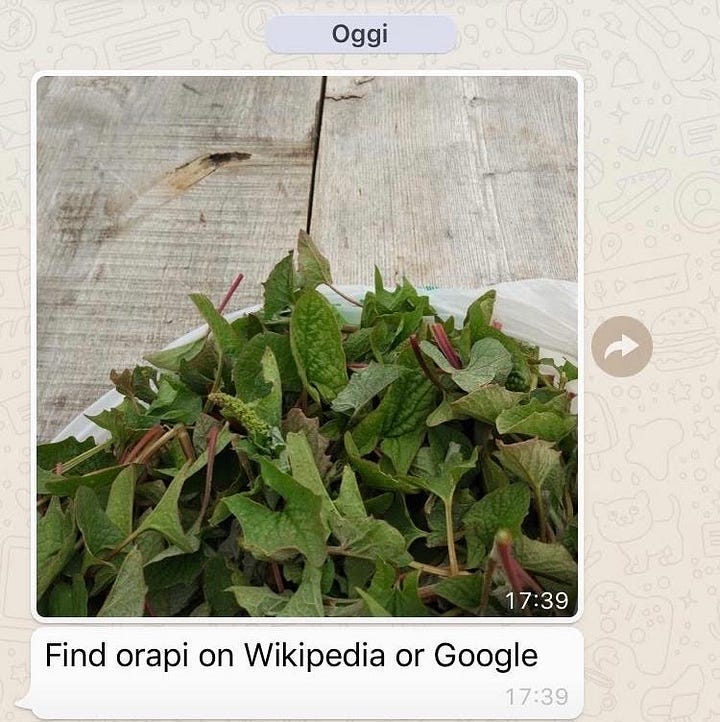
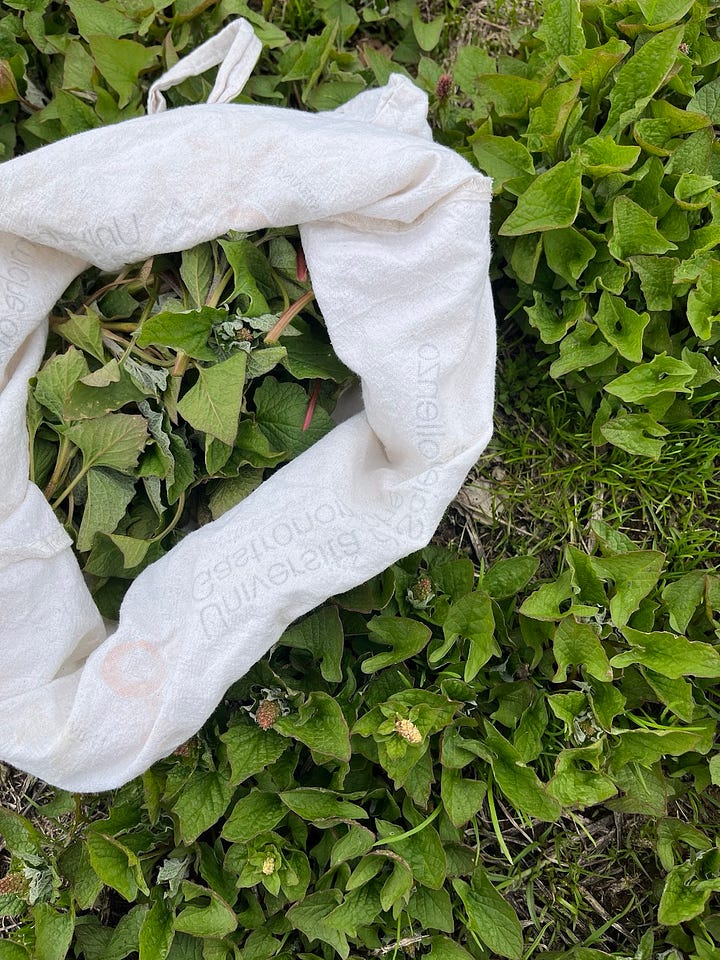
If you are wondering…our little fling ended long ago but I still go up into the mountain to pick orapi every year.
Orapi is a wild spinach that needs to grow at a minimum altitude of 500 meters above sea level.
In Pacentro it grows at 1000 meters on top of the Morrone, the masculine mountain that towers over via San Marco. Orapi is predominately found in the pastures where flocks of sheep and goats once grazed.
It often diffuses after the area is left uncultivated or abandoned for many years.
For me, this plant is intrinsically linked to the rich history of the transhumanza here in Abruzzo. It now grows abundantly in the mountains because grazing large flocks is a practice almost extinct.
In Pacentro, there are only three shepherds left taking their herd into the mountain.
Speaking of — June 1 marks the first day that shepherds could climb up into the mountain pasture. They will come back down again in October. One summer I would like to take bees up to the mountain but I was not quite ready this year.
The season is short for orapi and you have to hit it just right. Too early and it is too small, too late and the plant is already going to seed. This is just within a matter of days because a lot of the conditions depend on the rain and orapi love dry, fertile soil.
Walking around in a patch of orapi you have to watch where you are stepping or picking because there are most likely giant cow patties near the tastiest leaves.
There are currently no rules about picking orapi because it is so prolific. Some people come up into the mountains for the micro-season with large sacks, fill them with orapi and sell the leaves to restaurants in Pescara.
Here in Pacentro people climb up the mountain to get their yearly supply. They come down with just enough to blanch and then store in the freezer.
For Chiara’s residency, we decided to host a long lunch. One of my favorite dishes to make for friends is palak paneer so I wanted to revisit the recipe with an Italian approach (read: leave out almost all the delicious spices).

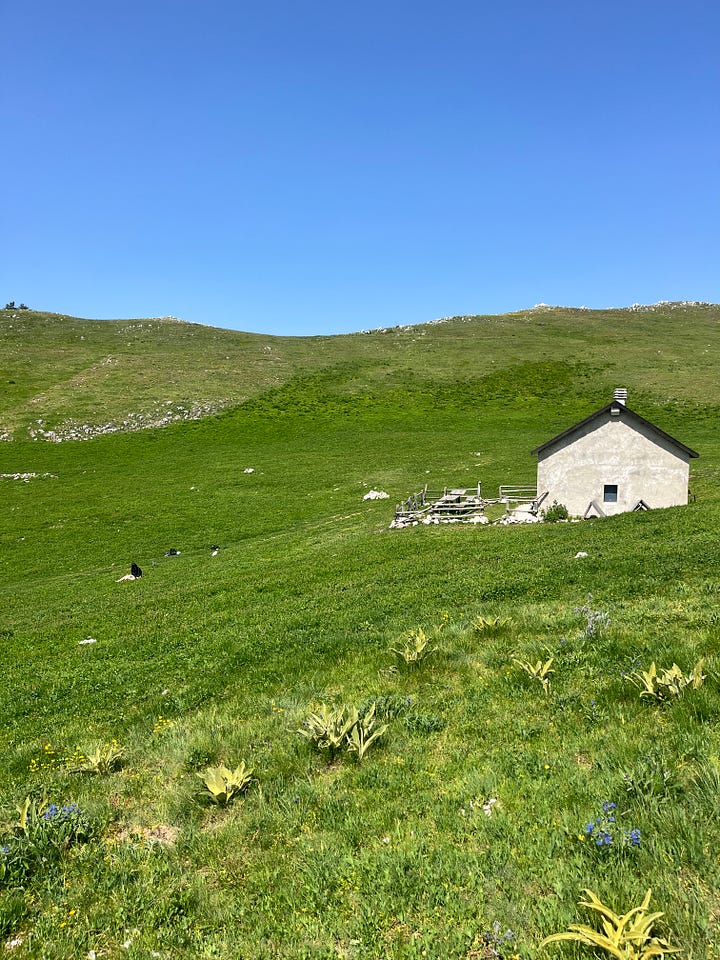
I wanted to use fresh orapi for our long lunch so we set out early Thursday morning after a coffee stop with the De Martini brothers.
After a steep two hour hike up to our spot we sat down in a big patch of orapi and began picking. Chiara has a hidden talent for guessing weight and she estimated we picked about 500 grams of orapi after about one hour of picking.
We shared the mountain only with five other people that morning. Three of which cautiously watched us and decided to ask us what we were doing after twenty minutes. They were visiting from Spain and they laughed telling us that they have spinach in their grocery store.
All in all Chiara and I were the only “hikers” with a clear intention of picking wild spinach.
We were quite meticulous with the leaves because we did not want to have to waste time cleaning our harvest. We were interested in plucking the more tender leaves for the palak paneer alla Pacentrana.
As we picked each leaf one by one we were making up songs about orapi and trying to guess why there is a farinosa underbelly. Chiara even taught me some Roman slang to help pass the time.
The orapi was just about to send all of its energy into flowering which will render the leaves more woody and less delicious. Some people claim that they enjoy eating the orapi flowers but I prefer just the leaves. I tried to pick excess so that I could store some in my fridge for loved ones that visit me later in the year.
The palak paneer alla Pacentrana was a real crowd pleaser. We are all longing to eat it again as soon as possible.
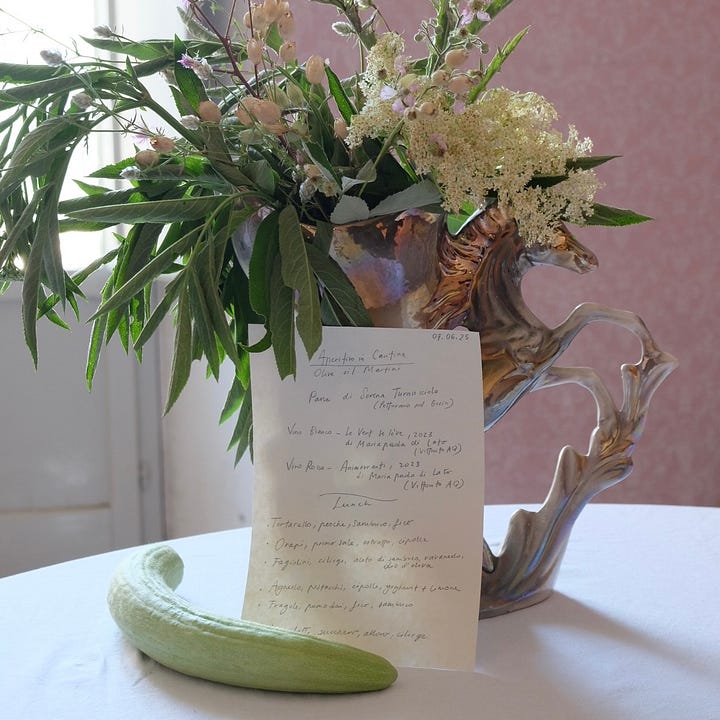
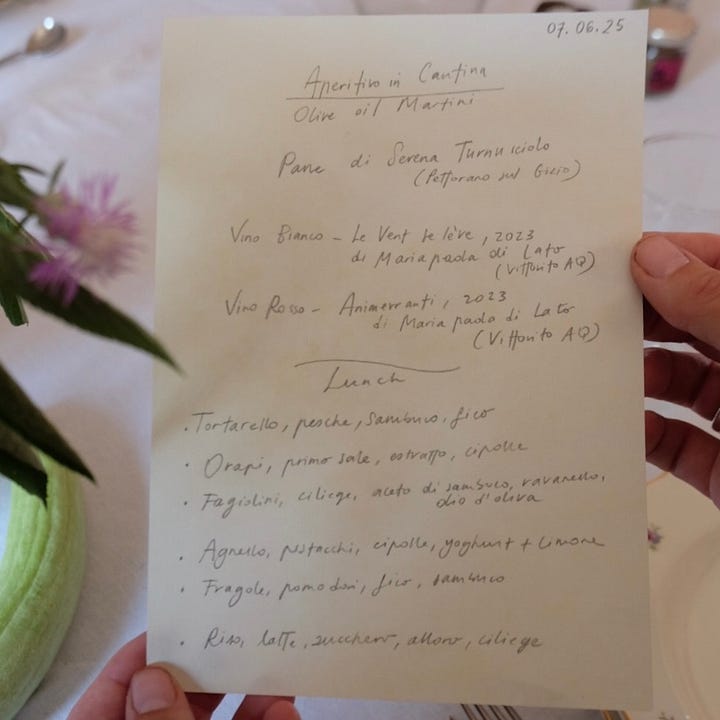
To celebrate Chiara’s last night in Abruzzo we went to eat at Ristorante Clemente. It was both of our first time and we wanted to try the historic restaurant of Daniela Maiorano’s father. We left with bellies full of delicious food and laughter because as we were walking out the door a man entered with two giant bags.
We grabbed each other and whispered “orapi!”
The kitchen was shocked we even knew what it was and of course we had to earn our street credit by mentioning that we too had just went up to the mountain for our own stash.
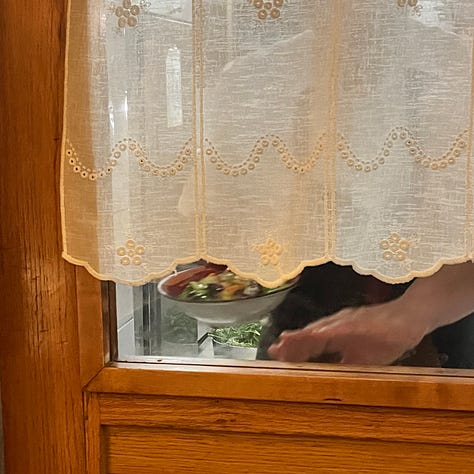
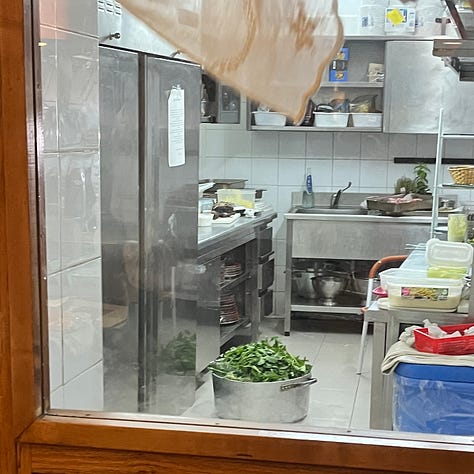
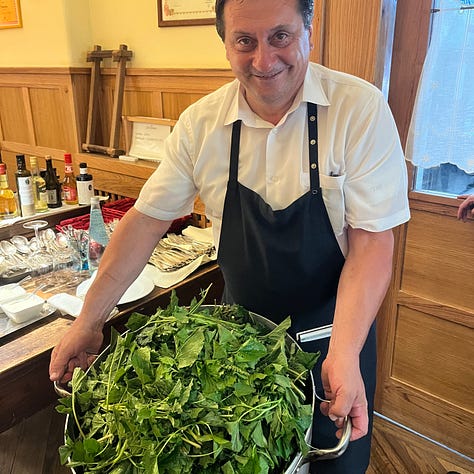
Orapi season has officially come and gone.
Maybe I have come full circle with a new romance in my life because I did Google orapi again for the first time in five years and I noticed that the common name for the wild spinach carries the same name as the man I am flirting with now.
It is my turn to send a love letter, asking if he knows about this edible plant.
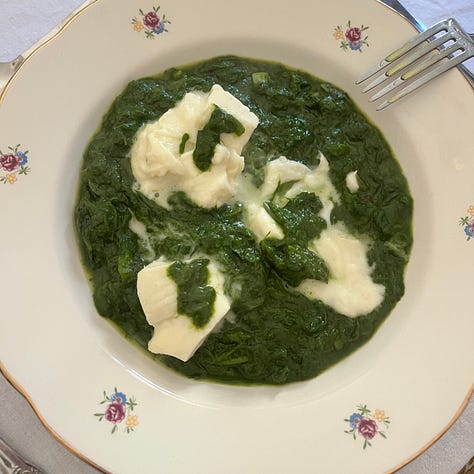

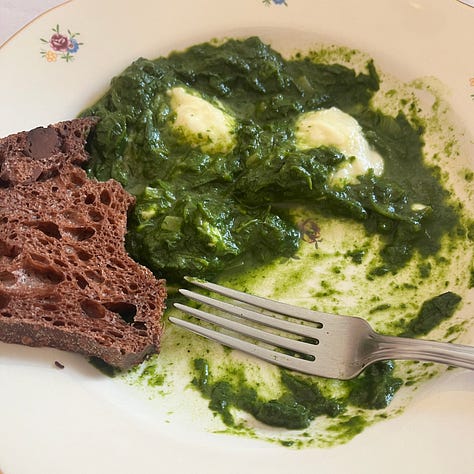
Palak paneer alla Pacentrana
1/2 kilo primo sale
1 kilo of fresh orapi or spinach
1 onion, chopped
2 cloves of garlic, grated
1 teaspoon of estratto or tomato paste
1 cup of water
Process:
These quantities will generously feed five people.
Blanch the orapi for two minutes and then drain the water, placing the wilted leaves directly into a blender. I split the orapi in half, one half blended and then mixed in the intact leaves so there is a difference in consisency throughout.
I even cleaned out the blender with water and saved one cup of orapi water to help with the consistency of the purée once it was in the pot with estratto and onions.
Heat oil in a pot and add the chopped onion. Once the onions start to soften, add all the orapi to the pot. Mix in the teaspoon of estratto or tomato paste. Add salt to your liking.
Cut your primo sale into cubes and let them sear in a hot pan. Once the edges crisp up and turn a golden brown you can plate the orapi in a bowl. Add the cubes of fried cheese on top of the electric green orapi or mix the cheese into the purée.

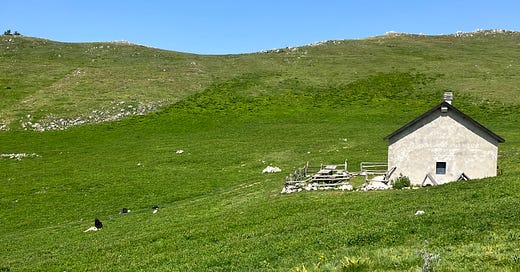


I would much rather eat your wild spinach! Sounds delish.